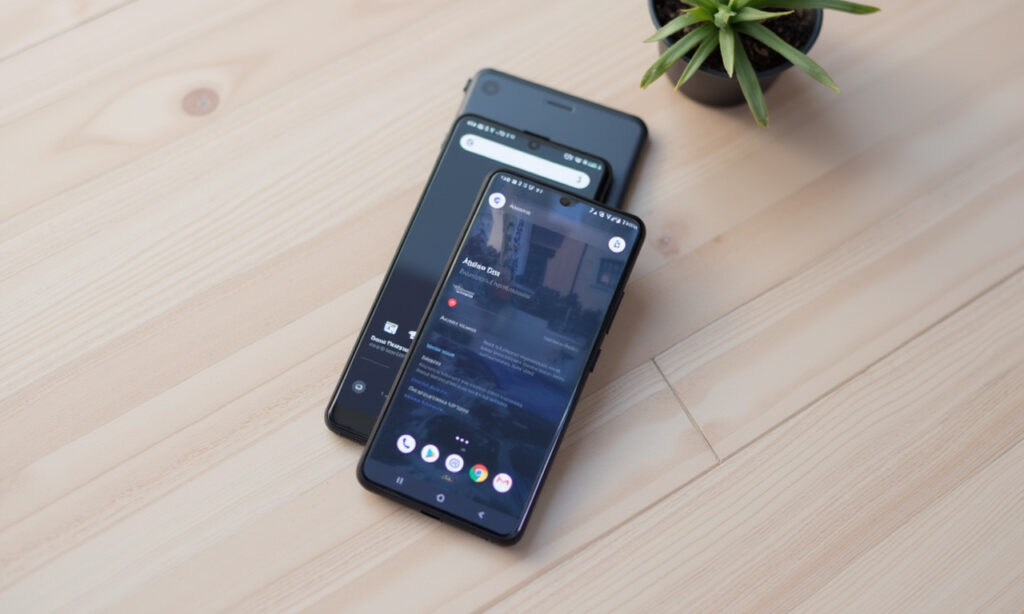Introduction to Android 16 Beta
Google has officially released the Android 16 Beta, marking a significant milestone in the development cycle of the upcoming Android version. This update is particularly exciting for developers and early adopters, as it brings a host of new features, improvements, and changes that will shape the future of Android.
Platform Stability Achieved
Android 16 Beta 3 has reached the “Platform Stability” milestone, indicating that the in-app interactions and app-facing behaviors are now finalized. This is a crucial step for developers, as it signals that they should start making any necessary adjustments to their applications to ensure compatibility with the new operating system[2][4].
New Features in Android 16 Beta
Text Outline and Accessibility
One of the standout features in Android 16 Beta 3 is the Text Outline functionality, designed to assist users with low vision. This feature enhances text readability by outlining text and altering the background color of text boxes, significantly improving visibility and legibility[4].
Local Network Protection
The Local Network Protection feature gives users greater control over which applications can connect to their devices. This safeguard requests user permission whenever an application attempts to access or connect to devices such as printers, smart TVs, or any other gadgets using Wi-Fi or data[4].
Auracast Support
Android 16 Beta introduces Auracast support, allowing audio to be transmitted from a single source to multiple receivers. This feature is particularly beneficial for individuals with hearing aids, enabling them to connect directly to broadcasts from compatible devices like TV streamers, receiving dedicated streams to their hearing aids[4].
User Experience Improvements
Performance and Animations
The latest beta update, Android 16 Beta 3.1, focuses on enhancing performance and animations. Users have reported an immediate improvement in performance, with faster app launch times and smoother transitions. The update also includes a range of bug fixes and under-the-hood improvements, making it one of the most stable beta builds yet[5].
UI Enhancements
The UI has seen several enhancements, including optimized battery performance and smoother animations. These changes contribute to a more seamless and efficient user experience, making the beta version feel more stable and polished compared to previous iterations[5].
Compatibility Updates
Supported Devices
Android 16 Beta is available on a range of Google Pixel devices, including the Pixel 6 and 6 Pro, Pixel 6a, Pixel 7 and 7 Pro, Pixel 7a, Pixel Fold, Pixel Tablet, Pixel 8 and 8 Pro, Pixel 8a, and the latest Pixel 9 series. Developers can install this beta on these devices through the Android Beta for Pixel program or by using the Android Emulator or a generic system image (GSI)[1][3].
Broader Device Support
Google is committed to ensuring that Android 16 will be available to more devices than any other Android version. This includes most devices launched in the last two years, reflecting Google’s new policy of providing at least three Android OS updates to budget and mid-range phones[2].
Practical Applications and Use Cases
Audio Sharing
The new Audio sharing feature, although initially introduced in Android 15 betas but not included in the stable release, is expected to make a comeback in Android 16. This feature allows users to cast music to several Bluetooth devices at the same time, enhancing the audio sharing experience[2].
Battery Optimization
Another feature that might see the light of day in Android 16 is the charging optimization mode, which limits battery charging to 80%. This feature, aimed at prolonging battery longevity, was available in Android 15 beta but did not make it to the stable release[2].
Known Issues and Limitations
While the Android 16 Beta offers numerous improvements, it is not without its issues. Users may encounter problems such as simulated touch events failing while using ADB or accessibility services, intermittent crashes in certain apps due to dependencies on internal ART structures, and various UI glitches in apps like Google Meet and Google TV[1].
Conclusion
Android 16 Beta marks an exciting phase in the evolution of the Android operating system. With its emphasis on accessibility, performance, and user control, this update sets the stage for a robust and feature-rich final release expected in Q2 2025. As Google continues to work with device partners to ensure a widespread rollout, users and developers alike can look forward to a seamless and enhanced Android experience.
How to Get Android 16 Beta
For those eager to try out the latest features, the Android 16 Beta can be installed on supported Pixel devices through the Android Beta for Pixel program, set up on the Android Emulator, or by using a generic system image (GSI). Ensure you back up your data before enrolling your device, as this process may involve some risks and potential data loss[3].
